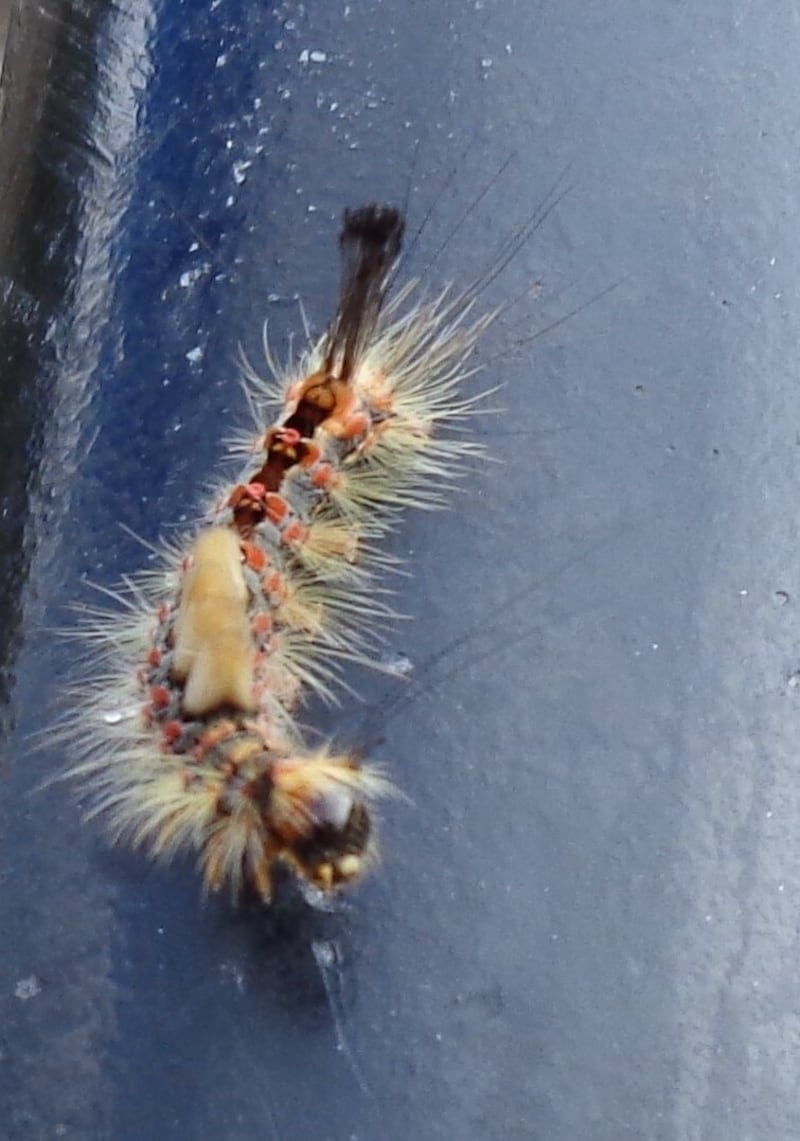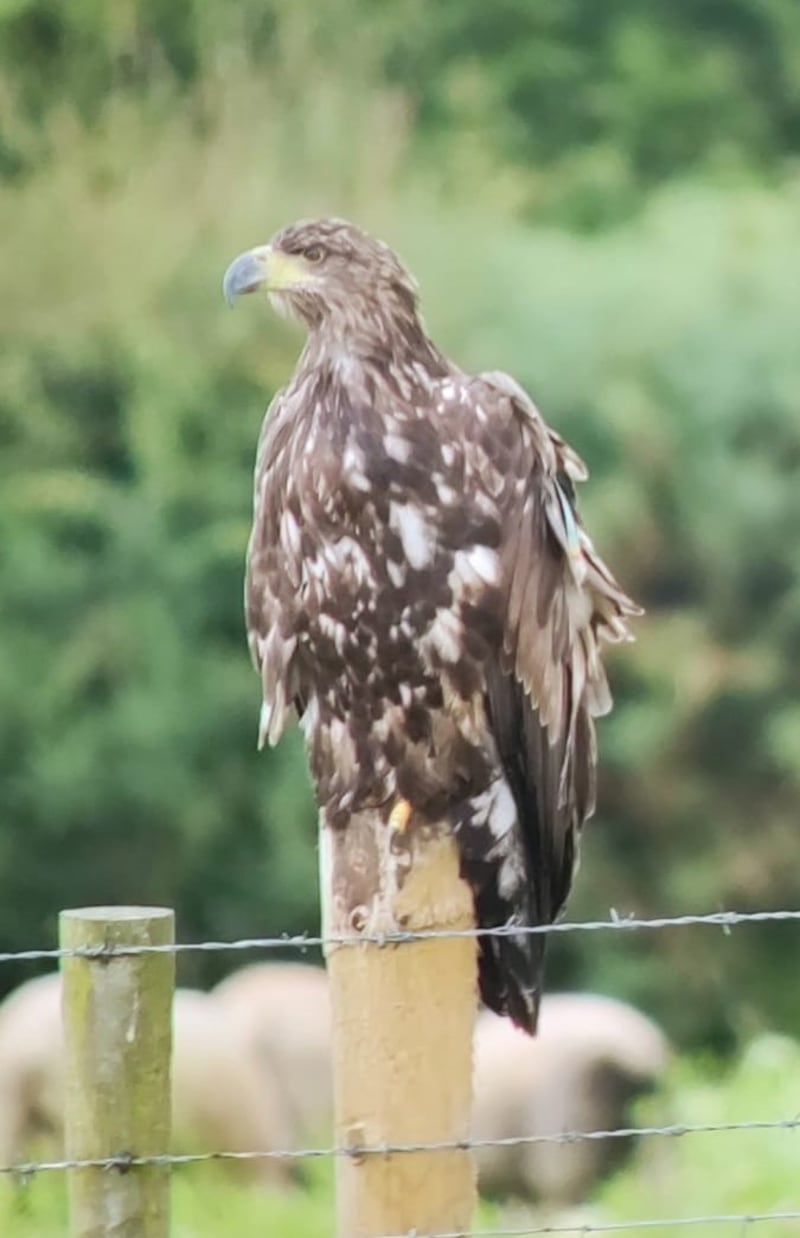This spider has been suspended from the taps of a washbasin in an outdoor toilet for several weeks. It never moves unless disturbed; then it goes into a spin. – Noel Mc Cormack, Clontarf, Dublin
This used to be known as the cellar spider as it lived in cellars, where the temperature would remain above 10 degrees. It is much more common in our heated houses and is called by the American name daddy-long-legs spider, thus confusing Irish people who always knew that winged insect the crane fly as the real daddy-long-legs.


What is this caterpillar we found in Glenveagh National Park? – Cuán Tierney (11), Dublin
It is the caterpillar of the emperor moth, which feeds on heather. It protects itself by growing irritant hairs along its body so it shouldn't be handled. The adult moth, which is grey and has huge eyespots giving it an owl-like appearance, flies in April and May.
Also in Glenveagh, Cuán found this even more hairy and irritation-causing caterpillar of the vapourer moth. It feeds on oak and hawthorn.

What is this colourful beetle caught in a spider's web on a dustbin in Belmullet, Co Mayo? – Bobby Carty
It is a burying beetle, which buries small dead mammals and birds in order to lay eggs on them. Its colours warn predators that it is distasteful. Although it is aimsir chaite, the spider hasn't eaten it.

My three-year-old spotted this cluster of snails, but what are they up to? – Kate Gleeson, Dublin
They are in aestivation, huddled together to stop themselves drying out during the hot, dry weather, although one has woken up and is making a break for it.

Daniel Moloney of Inishowen Wildlife Club took this photo of a sea eagle on staycation with two other sea eagles in Inishowen. It has a tag, marked H, showing that it is a male born in the Shannon estuary in 2020.
Have you a nature query, observation or photo you would like to share with The Irish Times? Submit it, with location of the image, via our website irishtimes.com/eyeonnature



















